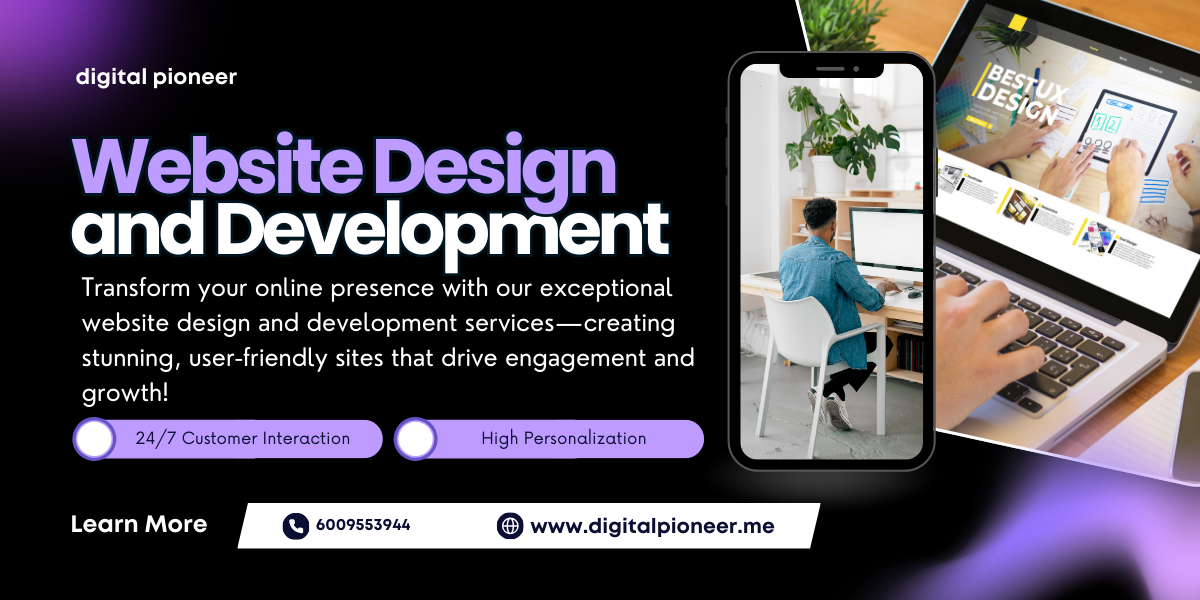Understanding the Importance of Web Design
In the digital age, a well-executed web design plays a pivotal role in establishing a strong online presence for businesses and content creators. The first impression that a website makes can significantly influence a visitor’s experience, determining whether they stay and explore or leave in frustration. An effective website design not only draws attention but also enhances user experience by facilitating easy navigation, quick loading times, and responsive layouts. These factors are essential; they contribute to how users interact with a site, ultimately affecting overall satisfaction and retention rates.
Effective web design also directly impacts brand recognition. A cohesive aesthetic, which includes color schemes, typography, and layout, helps in reinforcing a brand’s identity and values. When users encounter consistent visuals and messaging across a website, they are more likely to develop trust and familiarity with the brand. This recognition can foster customer loyalty, which is invaluable in a competitive market. Furthermore, web design elements that reflect brand personality can engage users more effectively, making them feel connected and invested in the brand’s offerings. WEBSITE DEVELOPERS
Conversion rates are another critical area influenced by web design. A visually appealing site coupled with intuitive usability encourages visitors to take desired actions, such as signing up for newsletters, making purchases, or contacting for services. Techniques such as strategic use of white space, clear call-to-action buttons, and compelling visuals can drive conversions. By adhering to key principles of usability, such as clarity, accessibility, and simplicity, a site can effectively guide users towards the desired outcomes.
Key Elements of a Stunning Website
Creating a stunning website necessitates a thoughtful amalgamation of several key components that enhance both visual appeal and functionality. One of the primary aspects is the site layout and navigation. A well-structured layout ensures that users can easily traverse the website, finding essential information effortlessly. Intuitive navigation aids in reducing bounce rates and keeps visitors engaged longer, ultimately improving usability.

Unlock your website’s potential with smart SEO tactics. Discover how to rank higher on Google and increase your audience. Take action today!
Search

George Mang
Advertising & Design Expert for Business, Creators
Latest Posts
Categories
Our Excellence Review
The Website Development Process
The website development process is a multi-faceted journey that requires careful planning and execution. It generally begins with the gathering of requirements, which involves discussions with stakeholders to ascertain the website’s objectives, target audience, and critical functionalities. This initial phase is essential, as it lays the groundwork for all subsequent stages. Proper documentation of requirements ensures that both developers and designers have clear guidelines to follow throughout the project.
Following the requirement-gathering phase, the next step is to create wireframes. Wireframes serve as a blueprint for the website, outlining its structural design without the distraction of visual elements. By focusing on layout and functionality, wireframes facilitate early user interface (UI) discussions and help teams identify potential issues before advancing to prototyping.
Once the wireframes have been developed and approved, the choice of a development platform becomes crucial. Businesses and content creators must consider their specific needs when selecting between options such as WordPress, Shopify, or custom HTML/CSS solutions. Factors like scalability, content management, and ease of use should play a significant role in this decision-making process.
Tailoring Your Website for Specific Audiences
To create an effective website, it is essential to tailor its content and design to the specific audiences it aims to serve. Different target groups, such as businesses, content creators, and professional services, have unique preferences, needs, and behaviors that must be considered in the website’s development. Understanding these variances begins with thorough audience research, which can be conducted through surveys, interviews, and analysis of user behavior on existing platforms.
Once the audience is identified, personalizing user experiences becomes a pivotal strategy. This can be achieved by integrating features such as customizable options, adaptive layouts, and location-based services. For example, a website catering to content creators might include tools for portfolio display, social media integration, and blogging capabilities, all tailored to enhance their creative workflow. In contrast, a website designed for businesses may prioritize clarity and functionality, showcasing services, client testimonials, and a streamlined contact process.
Optimization of website functionality for diverse demands is equally critical. This involves ensuring that the website is responsive and performs well across various devices and browsers, maintaining accessibility standards, and employing user-friendly navigation. Additionally, leveraging analytics tools can provide insights into user engagement metrics, allowing for ongoing adjustments to meet evolving audience expectations.
In unison, these strategies foster an environment where targeted design and tailored content can thrive. By addressing the unique demands of different audience segments, businesses and content creators can boost engagement and increase customer satisfaction. Ultimately, by constructing a website that resonates with its intended users, you pave the way for sustained interaction and long-term success. WEB DEVELOPMENT SERVICES
